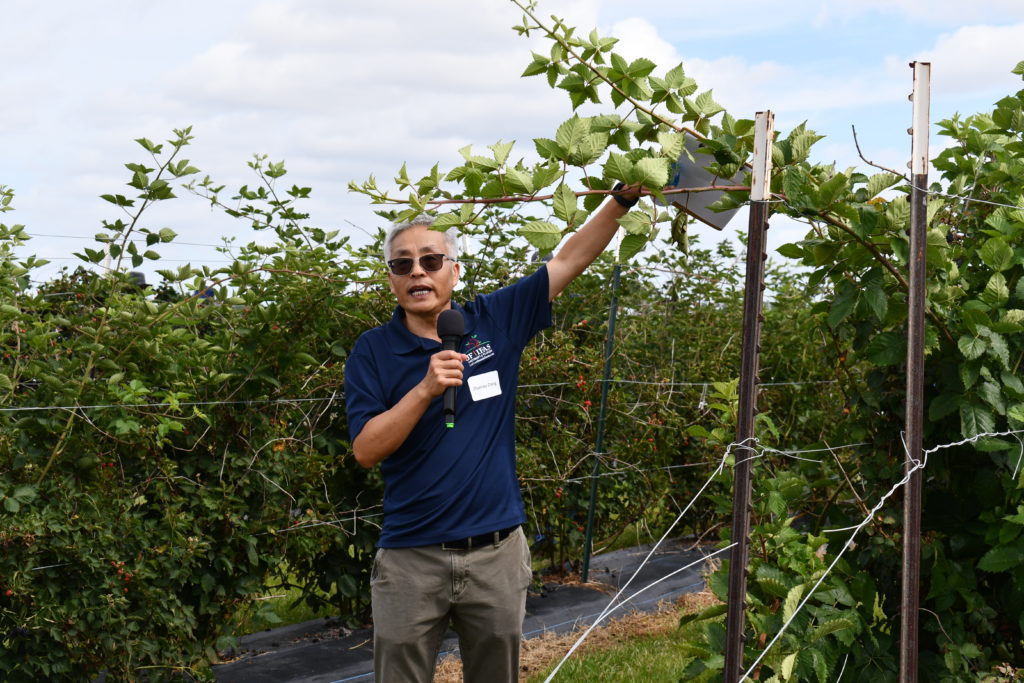By Frank Giles
In late May, the Gulf Coast Research and Education Center (GCREC) hosted growers interested in the prospect of producing blackberries in Florida. Several University of Florida Institute of Food and Agricultural Sciences (UF/IFAS) scientists have been studying the crop in recent years.
Zhanao Deng, UF/IFAS professor of environmental horticulture, is conducting trials of existing blackberry varieties at GCREC to gauge their performance in Florida. He also has begun to select parent cultivars with desirable traits to breed new varieties that will fit in the state.

Deng said the biggest limiting factor for existing varieties is their chilling hour requirements. Many of the most popular varieties were bred in Arkansas, which has much higher chilling hours than Florida. The bare minimum for planting varieties in Florida is about 300 chill hours.
A few varieties meet that standard and show promise in Deng’s variety trials. He said the Prime-Ark Freedom variety has been the best, most consistent overall performer in the field.
“So far, Freedom has had the highest yield in our trial. We have produced about 7.7 pounds of berries per plant,” Deng said. “This variety is a little early. You can harvest fruit from late April until late May. This might not be ideal for commercial growers because it overlaps some with the window of imports from Mexico. This variety also has reverse coloring (turns back red) after harvest, so it is not going to be good for the shipping market, but it will be good for local, direct sales. If we can harvest 9,000 pounds per acre with this variety, it will be very good for local markets.”
To counter the effects of low chilling hours in Florida, Shinsuke Agehara, UF/IFAS assistant professor of horticulture, has been studying chemical applications to induce budbreak in blackberries. Agehara has had some success with the use of Gibberellic acid in other crops, but it appears the hormone will not be as effective in blackberries. But Agehara has found that applications of urea have been effective in inducing budbreak in blackberries. Urea acts as a defoliant of the plants.
“For any area that has less than 500 chill hours per year, we recommend applications of urea,” he said. “Those application should be made from mid-February to early March, which is right before natural budbreak timing in blackberries.”
For more information on Florida blackberry production, click here.










